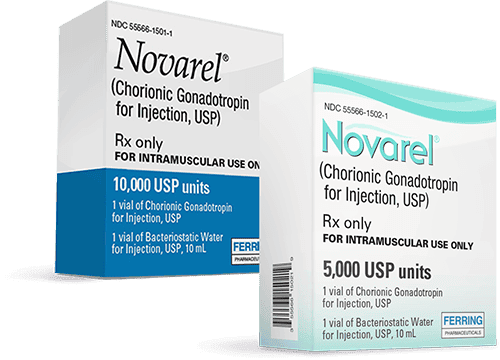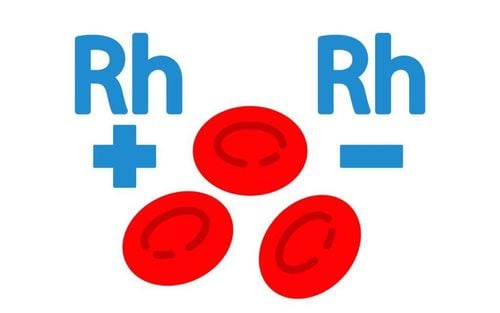This is an automatically translated article.
The article was professionally consulted by Doctor Department of Obstetrics and Gynecology - Vinmec Hai Phong International General Hospital.
The luteal phase is the second half of the menstrual cycle, beginning after ovulation and ending with the next menstrual period. A short luteal phase is associated with difficulty conceiving and early pregnancy loss. The luteal phase is an important part of not only fertility, but also your overall health.
1. What is the luteal phase?
The menstrual cycle is made up of four phases. Each phase serves a different function:
Initiation is when you have your period the body sheds your uterine lining from the previous cycle in the absence of pregnancy. The follicular phase, which overlaps with menstruation for the first few days, is when follicles develop. One follicle will generally become larger than the rest and release a mature egg. This signals the end of the follicular phase. Ovulation is the process of releasing an egg once it has matured. The luteal phase begins when the egg begins to travel down the fallopian tube. This phase ends when the next phase begins. The luteal phase includes several important events that prepare the body for pregnancy. Let's take a closer look at what happens during this phase and what it means if the period is longer or shorter than usual.
Trắc nghiệm: Bạn có hiểu đúng về dấu hiệu mang thai sớm?
Các dấu hiệu mang thai sớm không phải chỉ mỗi trễ kinh mà còn có rất nhiều dấu hiệu khác như xuất huyết âm đạo, ngực căng tức,… Điểm xem bạn biết được bao nhiêu dấu hiệu mang thai sớm thông qua bài trắc nghiệm này nhé!
2. What happens in the luteal phase?

During the menstrual cycle, the luteal phase is the second half of the cycle. It begins after ovulation and ends with the first day of your period.
Once the follicle has released the egg, the egg travels down the fallopian tube, where it can come in contact with the sperm and be fertilized. The cyst then changes, turning yellow and turning into a new structure called the corpus luteum.
The corpus luteum releases progesterone and some estrogen. Progesterone thickens the lining of the uterus so that a fertilized egg can implant. Blood vessels develop inside the lining. These blood vessels will deliver oxygen and nutrients to the developing embryo.
If you are pregnant, your body will also start producing gonadotropin (hCG). This hormone maintains the corpus luteum.
HCG allows the corpus luteum to continue producing progesterone until about the 10th week of pregnancy. The placenta then produces progesterone.
Progesterone levels increase throughout pregnancy. With specific readings as follows:
First trimester: 10 to 44 nanograms per milliliter (ng/mL) of progesterone Second trimester: 19 to 82 ng/mL Third trimester: 65 to 290 ng/ mL If there is no pregnancy at this stage, the corpus luteum will shrink and die into a small piece of scar tissue. Progesterone levels will drop. The lining of the uterus will shed. Then the whole cycle will repeat.
3. The duration of the luteal phase
A normal luteal phase can last from 11 to 17 days. In some women, the luteal phase lasts 12 to 14 days.
The luteal phase is considered short if it lasts less than 10 days. In other words, you have a short luteal phase if you get your period 10 days or less after you ovulate.
The short luteal phase does not give the uterus a chance to grow enough to support the developing baby. As a result, it may be more difficult to get pregnant or it may take longer for you to conceive.
A long luteal phase can be caused by a hormone imbalance such as polycystic ovary syndrome (PCOS). It's also possible that you're pregnant and haven't realized it yet.
The length of the luteal phase does not change as you age. But progesterone levels during this period can drop as menopause approaches.

4. Causes and treatment of short luteal phase
4.1 Causes A short luteal phase can be a sign of a condition called a luteal phase defect. In a luteal phase defect, the ovaries produce less progesterone than usual. Or, the lining of the uterus is not growing enough to respond to progesterone. A luteal phase defect can lead to infertility and miscarriage.
This condition has been linked to many health problems, including things like:
Anorexia Endometriosis Obesity Polycystic ovary syndrome Thyroid disorder High intensity exercise Several factors Lifestyle may also be behind a brief luteal phase. In one study, women who smoked had a shorter luteal phase because smoking reduced the body's production of estrogen and progesterone.
With a luteal phase defect, problems may be noticed such as:
Short menstrual cycle Miscarriage Difficulty getting pregnant Small spot of blood between ovulation and menstrual cycle 4.2 Treatment

To improve your chances of getting pregnant, your doctor may treat luteal insufficiency with:
Infertility drug Clomiphene citrate (Clomid): helps stimulate the ovaries to make more follicles, which release eggs. Injected hCG: in low doses, helps to initiate ovulation and produce more progesterone. Progesterone supplements are given through injections, pills or suppositories. They can be used after ovulation to help the lining of the uterus grow. Studies have not demonstrated that treating a luteal phase defect improves the chances of a successful pregnancy in women who are not using assisted reproductive techniques.
The luteal phase is an important period related to fertility. If you suspect that you have a long or short luteal phase, talk to your doctor for prompt and proper treatment.
Please dial HOTLINE for more information or register for an appointment HERE. Download MyVinmec app to make appointments faster and to manage your bookings easily.













